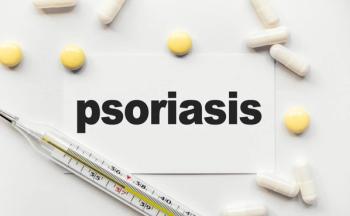
Treatment, Management Guidelines for 6 Forms of Vasculitis Released
Treatment options for patients with these rare diseases have expanded in recent years, but rheumatologists may have limited experience with systemic vasculitis.
Three new guidelines have been released for the treatment and management of
The 3 guidelines cover 6 forms of vasculitis; a fourth guideline on Kawasaki disease will be released soon, according to the American College of Rheumatology (ACR) and the Vasculitis Foundation (VF). The guidelines are the first produced and endorsed by the 2 organizations.
Although the diseases are similar, they may differ in regard to which organs are affected and which therapy is most suitable.
The guidelines cover
The guideline for GCA and TAK include 42 recommendations and 3 ungraded position statements.
The recommendations and statements address clinical questions relating to the use of diagnostic testing (including imaging), treatments, and surgical interventions in GCA and TAK. Recommendations for GCA support the use of glucocorticoid-sparing immunosuppressive agents and the use of imaging to identify large vessel involvement. Recommendations for TAK include the use of non-glucocorticoid immunosuppressive agents with glucocorticoids as initial therapy.
The PAN guideline provides a total of 16 recommendations and 1 ungraded position statement. The recommendations support early treatment of severe PAN with cyclophosphamide and glucocorticoids, limiting toxicity through minimizing long-term exposure to both treatments, and the use of imaging and tissue biopsy for disease diagnosis. The recommendations endorse minimizing risk by using established therapy at the start of the disease and identify new areas where adjunctive therapy may be warranted.
The AAV guideline gives 41 recommendations and 10 ungraded position statements for granulomatosis with polyangiitis (GPA), microscopic polyangiitis (MPA), and eosinophilic granulomatosis with polyangiitis (EGPA).
The guideline provides recommendations for remission induction and maintenance therapy as well as adjunctive treatment strategies in GPA, MPA, and EGPA. The recommendations include the use of rituximab for remission induction and maintenance in severe GPA and MPA and the use of mepolizumab in non-severe EGPA.
According to the VF, the overall, worldwide incidence of AAV ranges from 0.5.-20 cases per 1 million people. In children, the incidence ranges from 0.45-6.4 cases per 1 million children per year.
"Many rheumatologists may have limited experience caring for patients with these diseases," Sharon Chung, MD, director of the Vasculitis Clinic at the University of California, San Francisco, and the lead investigator of the guidelines, said in a statement. "However, the treatment options for patients with vasculitis have expanded in recent years. Thus, these guidelines provide practitioners evidence-based recommendations to help navigate the treatment path for their patients."
She also said the work that went into the guidelines “identified knowledge gaps that would benefit from additional research, like comparative effectiveness trials, longitudinal studies of imaging modalities, and identification of biomarkers to inform disease activity assessments."
The guidelines were developed using Grading of Recommendations Assessment, Development and Evaluation methodology, which creates rigorous standards for judging the quality of the literature available and assigns strengths to the recommendations.
Newsletter
Stay ahead of policy, cost, and value—subscribe to AJMC for expert insights at the intersection of clinical care and health economics.







































